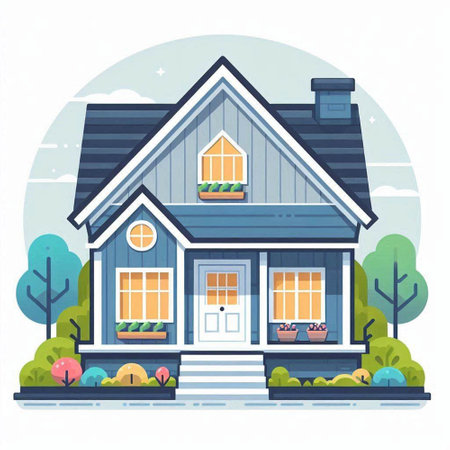Overview of Garage Conversions in the U.S.
Garage conversions have become an increasingly popular home improvement trend across the United States. As more homeowners look for creative ways to maximize their living space or boost property value, transforming garages—whether attached or detached—offers a practical solution. Instead of letting this area collect clutter or sit unused, many Americans are choosing to reimagine their garages as home offices, guest suites, gyms, rental units, or entertainment spaces.
Why Are Garage Conversions Gaining Popularity?
The growing interest in garage conversions is driven by several factors. With rising real estate prices and limited affordable housing options in many cities, converting a garage allows homeowners to gain extra usable space without the high costs and hassle of building an addition or moving to a larger home. The flexibility offered by a garage conversion can also address changing family needs—such as creating a private area for aging parents, returning adult children, or remote work setups that became essential during the pandemic.
Common Reasons Homeowners Consider Garage Conversions
| Reason | Description |
|---|---|
| Additional Living Space | Create bedrooms, family rooms, or in-law suites without major construction. |
| Home Office | Provide a quiet and separate workspace for remote jobs or small businesses. |
| Rental Income | Convert to an accessory dwelling unit (ADU) and rent out for extra income. |
| Entertainment Area | Design a game room, movie theater, or hobby studio tailored to family interests. |
| Fitness Room | Set up a personal gym to save on membership fees and commute time. |
Attached vs Detached Garages: What’s the Difference?
An attached garage is physically connected to your house, sharing at least one wall with your main living area. In contrast, a detached garage stands separately from your home structure—usually located elsewhere on your property. This distinction matters because it affects how you approach the conversion process, from permits and utilities to privacy and accessibility. Understanding the pros and cons of each type will help you decide which option best fits your goals and lifestyle needs as you plan your garage conversion project.
2. Key Differences Between Attached and Detached Garages
When planning a garage conversion, it’s important to understand the differences between attached and detached garages. These differences can influence everything from construction costs to how easily you can connect utilities or create a seamless living space.
Construction Styles
Attached garages are physically connected to the main house, often sharing at least one wall and sometimes part of the roofline. This makes them easier to access from inside the home, especially in bad weather. Detached garages stand alone on the property and do not share any walls with the main house. They can be located at various spots on your lot, depending on local zoning rules and available space.
Comparison Table: Attached vs Detached Garages
| Attached Garage | Detached Garage | |
|---|---|---|
| Location | Connected directly to the house | Separate building, anywhere on property |
| Access | Direct indoor access; often through laundry or mudroom | Outdoor walk required; separate entrance |
| Utility Connections | Easier to extend HVAC, plumbing, electricity from main house | May require new utility lines or separate systems |
| Privacy | Less private; integrated with home’s living space | More private; great for guest suites or home offices |
| Zoning & Permits | Simpler permitting if staying within original footprint | Zoning may limit size/location; permits can be more complex |
| Curb Appeal Impact | Minimal exterior changes needed for conversion | Potential for a totally new structure look or style update |
Impact on Conversion Projects
The type of garage you have affects what’s possible—and practical—when converting it into living space:
Attached Garages:
- Tend to cost less to convert since they’re already close to utilities and part of the home’s structure.
- Often easier to blend the new space with your existing home layout and design.
- Might have limitations if you want complete privacy or separation (like for a rental unit).
Detached Garages:
- Offer flexibility for creating standalone guest houses, studios, or rental units.
- Might need additional investment for heating/cooling, plumbing, and electrical work.
- Zoning regulations could affect what kind of conversion is allowed (for example, turning it into an accessory dwelling unit or ADU).

3. Pros and Cons of Converting Attached Garages
Accessibility
One of the main reasons homeowners in the U.S. consider converting an attached garage is easy access. Since these garages are directly connected to the main house, you can move between spaces without stepping outside—a big plus during cold winters or rainy days. This convenience makes attached garage conversions especially attractive for creating extra living rooms, home offices, or guest suites.
Cost Implications
Converting an attached garage typically costs less than converting a detached one. Existing walls, roofing, and utility connections (like electricity and sometimes HVAC) lower renovation expenses. However, costs can still add up if plumbing needs to be installed or if significant upgrades are needed for insulation and heating/cooling.
| Expense Category | Attached Garage | Detached Garage |
|---|---|---|
| Basic Construction | Lower (uses existing structure) | Higher (may need more new materials) |
| Utilities Connection | Easier/cheaper (closer to main house systems) | More complex/more expensive |
| Permitting & Zoning | Simpler (fewer setbacks) | Can be more complicated |
Zoning Considerations
Zoning laws and building codes in most American cities are generally more favorable for attached garage conversions. Since these spaces are already part of the primary residence, it’s often easier to get permits. However, you’ll still need to check with your local city or county planning office—requirements can vary by state and neighborhood. Common concerns include ensuring proper egress windows, fireproofing walls shared with the house, and maintaining minimum off-street parking.
Impact on Home Value
An attached garage conversion can boost your home’s usable square footage, which is a major selling point in many U.S. markets. However, some buyers may prefer a traditional garage for parking or storage, so removing that option could impact resale value in areas where covered parking is highly valued due to weather conditions.
| Potential Impact | Description |
|---|---|
| Increased Living Space Value | Adds bedrooms/offices that appeal to many buyers |
| Pparking Loss Concern | Might deter buyers who need secure or weather-protected parking |
| Curb Appeal Changes | If exterior isn’t well-matched, could reduce overall appeal |
4. Pros and Cons of Converting Detached Garages
Privacy and Separation from the Main House
One of the biggest appeals of converting a detached garage is the extra privacy it offers. Since its physically separated from your main home, it creates a quiet, independent space. This is perfect for uses like a guest house, rental unit (ADU), home office, or creative studio. The distance helps keep noise and daily activities apart from your main living area, making it easier to focus or give guests their own space.
Potential Uses: ADUs and More
Detached garages are incredibly flexible. Here are some common ways homeowners use converted detached garages:
| Possible Use | Description |
|---|---|
| Accessory Dwelling Unit (ADU) | Can be rented out for extra income or used for family members |
| Home Office | Offers a quiet workspace away from household distractions |
| Guest Suite | Provides privacy for visitors without disturbing household routines |
| Art/Music Studio | A dedicated space to work on creative projects with minimal interruptions |
| Fitness Room/Gym | An ideal spot for exercise equipment and workouts without taking up space inside your home |
Utilities: Challenges and Considerations
Bringing utilities—like electricity, plumbing, and HVAC—to a detached garage can be more complicated and costly compared to attached conversions. Since detached garages are usually farther from existing utility lines, you may need to run new pipes or wires underground. This can add time and expense to your project, especially if you plan to add a bathroom or kitchen.
Main Utility Challenges:
- Plumbing: Installing water lines and drainage is often the most complex part.
- Electricity: May require upgrading your main panel or running new circuits.
- Heating/Cooling: Standalone systems (like mini-split units) may be needed for comfort year-round.
Local Regulations and Zoning Laws
Zoning rules and building codes are important considerations when converting a detached garage in the U.S. Some neighborhoods have specific restrictions about creating separate living spaces or rentals (ADUs). You might need special permits, inspections, or need to follow setback requirements that dont apply to attached garages. Always check with your city or countys planning department before starting any major renovation.
Main Pros & Cons at a Glance:
| Pros | Cons |
|---|---|
| Greater privacy for occupants Flexible usage options Ideal for rental/guest space No disruption to main house during construction |
Difficulties with adding utilities May cost more than attached conversions Tougher local zoning in some areas Less convenient access in bad weather |
5. Average Costs and Important Considerations
Typical Costs for Attached vs Detached Garage Conversions
The cost of converting a garage in the U.S. can vary widely depending on whether it’s attached or detached, the size, the intended use, and your local labor rates. Here’s a quick breakdown of what you might expect:
| Type | Average Cost Range | Main Cost Factors |
|---|---|---|
| Attached Garage Conversion | $15,000 – $45,000 | Tapping into existing utilities, easier access to home, fewer exterior changes needed |
| Detached Garage Conversion | $25,000 – $60,000+ | New utility connections (water/electric/HVAC), possible foundation upgrades, more exterior work |
What’s Included in These Costs?
- Design and permits: Architectural plans and city permits are typically required for both types.
- Insulation and drywall: Essential for making the space comfortable year-round.
- Electrical and plumbing: Especially important if you’re adding a bathroom or kitchenette.
- Flooring and finishes: Flooring, paint, and finishing touches like lighting fixtures add to the budget.
- Windows and doors: Upgrades may be needed for light, access, and meeting code requirements.
Budgeting Tips for Your Garage Conversion Project
- Get multiple quotes: Always compare at least three bids from licensed contractors.
- Plan for surprises: Set aside 10–20% of your budget for unexpected issues (like hidden damage or code upgrades).
- Decide on DIY vs. professional work: Some tasks (like painting or flooring) can be DIY-ed to save money, but structural, electrical, and plumbing work should be left to pros.
- Choose finishes wisely: Opt for mid-range materials to balance quality and cost.
Navigating Permits and Regulations
Garage conversions almost always require permits in the U.S. Check with your local building department early—each city or county has its own rules about zoning, minimum ceiling heights, window egress, parking requirements, and more. Failing to get proper permits can lead to fines or problems when selling your home later.
Selecting the Right Contractor
- Check credentials: Look for licensed and insured contractors with experience in garage conversions.
- Ask for references: Talk to previous clients if possible.
- Get everything in writing: Make sure your contract covers the full scope of work, timeline, payment schedule, and how changes will be handled.
The Bottom Line on Budgeting
An attached garage conversion is usually less expensive than a detached one because it can leverage existing utilities and structure. However, both projects can significantly improve your home’s value and livability if done right—just make sure to plan carefully!


